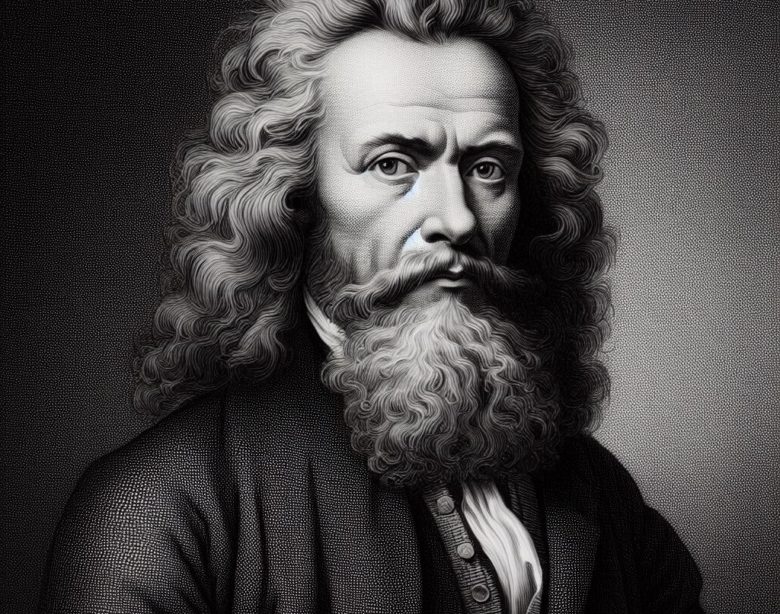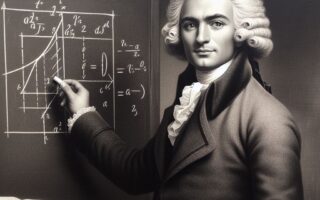Among the towering figures of the scientific revolution, Gottfried Wilhelm Leibniz stands as a polymath whose intellectual range and depth were virtually unmatched. A philosopher, mathematician, logician, diplomat, historian, and inventor, Leibniz was one of the last true universal geniuses. His ideas not only shaped the development of calculus but also laid the groundwork for modern logic, computer science, and information theory. His vision extended beyond the limits of his time, and his insights continue to influence mathematics, science, and philosophy centuries later.
Though often remembered alongside Isaac Newton as a co-founder of calculus, Leibniz’s contributions go much further. He was a systematic thinker who dreamed of a world where reason and logic could be applied to all knowledge—a world where disputes could be resolved by calculation. “Let us calculate!” was his famous challenge, revealing his belief in the power of rational analysis to solve even the most complex of problems.
Early Life and Education
Leibniz was born on July 1, 1646, in Leipzig, in what is now Germany. His father was a professor of moral philosophy, and although he died when Leibniz was just six, his extensive library left a lasting impression. By age 12, Leibniz was already reading Latin and studying Greek classics. He entered the University of Leipzig at the age of 14 and earned a law degree by 20.
From an early age, Leibniz demonstrated a passionate curiosity about nearly every field of human knowledge. He believed that all truths were connected and that mathematics was the key to unlocking the universe’s mysteries.
The Calculus Controversy
Leibniz’s most famous mathematical achievement is undoubtedly his independent development of calculus, which he began working on in the late 1670s and published in 1684. Almost simultaneously, Isaac Newton had developed his own version of calculus in England, although Newton was slower to publish.
The result was one of the most bitter disputes in the history of mathematics: the calculus priority dispute. Newton’s supporters accused Leibniz of plagiarism, while Leibniz maintained his work was original and independent. Historians now generally agree that both men developed calculus independently, though they used very different notations and approaches.
Importantly, Leibniz’s notation—including symbols like ∫ for integrals and d for differentials—is the notation still used in modern calculus. His emphasis on symbolic representation and general rules made calculus more accessible and flexible, laying the foundation for the way it is taught and used today.
Leibniz’s Contributions to Mathematics
Beyond calculus, Leibniz made foundational contributions to a wide range of mathematical fields:
- Binary Number System: Leibniz was the first to formally develop the binary system, representing numbers using only 1s and 0s. His 1703 paper Explication de l’Arithmétique Binaire anticipated the digital age by over two centuries. Today, binary is the language of computers, making Leibniz a philosophical grandfather of computer science.
- Formal Logic: Leibniz envisioned a universal language of logic, what he called the characteristica universalis. He believed that reasoning could be formalized using symbols and rules, much like algebra. Though not fully realized in his lifetime, this dream directly inspired the later development of symbolic logic, Boolean algebra, and automated reasoning.
- Determinants and Matrices: He made early discoveries related to determinants and matrices, crucial tools in linear algebra.
- Mathematical Analysis: Leibniz worked extensively in infinite series, combinatorics, and differential equations, helping to solidify the tools of mathematical analysis.
- Notations and Symbols: Much of the mathematical notation we use today originated with Leibniz. He understood that symbols were not just shortcuts but tools for thought, helping to structure reasoning and make complex ideas manageable.
Leibniz the Philosopher
Leibniz’s philosophical work was just as influential as his mathematics. He believed the universe was composed of simple, indivisible units called monads, each reflecting the entire cosmos in a unique way. This metaphysical view was part of a broader belief that the universe operated on pre-established harmony, governed by logical laws and divine reason.
His philosophical optimism is best known through his assertion that we live in the “best of all possible worlds,” a phrase that would later be satirized by Voltaire but rooted in Leibniz’s belief that God’s rationality would ensure a maximally good creation.
Leibniz also made early contributions to modal logic, epistemology, and the philosophy of mind, and he engaged in correspondence with many leading intellectuals of the time, including Spinoza, Arnauld, and Clarke.
Technology and the Calculating Machine
In addition to theory, Leibniz was also a practical inventor. He designed and built the Stepped Reckoner, one of the first mechanical calculators capable of performing addition, subtraction, multiplication, and division. Though limited by the mechanical capabilities of the time, it was an ambitious leap toward automated computation—a vision that would eventually be realized by machines like those imagined by Babbage and Turing.
Leibniz saw such machines not merely as tools for arithmetic but as a metaphor for the mind and as a step toward a mechanization of reasoning itself.
Legacy and Impact
Leibniz’s legacy is vast and touches virtually every area of modern science and technology:
- Mathematics: His contributions to calculus, algebra, combinatorics, and logic remain fundamental.
- Computer Science: The binary system and his dream of symbolic reasoning laid the conceptual foundations of computing.
- Philosophy: His ideas about logic, metaphysics, and epistemology continue to influence thinkers and are studied to this day.
- Science and Engineering: His early computing machines and ideas about automation prefigure modern AI and digital systems.
Perhaps most of all, Leibniz exemplified interdisciplinary thinking. He believed in a universal science, where knowledge could be integrated, symbolized, and reasoned about systematically. In many ways, the digital age is an embodiment of Leibniz’s vision—a world where logic, language, and computation are interwoven.
Conclusion: The Legacy of a Visionary
Gottfried Wilhelm Leibniz was not only a mathematician but also a philosopher of systems. He saw the universe as a place of order, harmony, and infinite complexity, governed by reason and capable of being understood. His calculus helped scientists describe motion and change. His binary arithmetic powers every computer on Earth. His vision of a symbolic language for all knowledge prefigured modern computing and artificial intelligence.
Leibniz lived in a world without computers, satellites, or artificial intelligence—but he imagined them all. His legacy is not only in the theorems he proved or the machines he designed, but in the way he thought: boldly, broadly, and across disciplines.
He once wrote, “The true method of discovery is like the flight of an eagle; it makes its circuit at a great height, and the wide sweep of its wings takes in the whole landscape.” Leibniz flew higher and farther than most, and we are still discovering the landscapes he glimpsed.
Please Visit Our Sponsors:
We only support vendors that we use ourselves in our home. The links below are our own links or affiliate links but know that we use all of these now, or have in the past. As the author/creator of this blog, I also tutor mathematics on Wyzant, sell on Etsy, create content on TpT, and learn Korean on Rosetta Stone.





